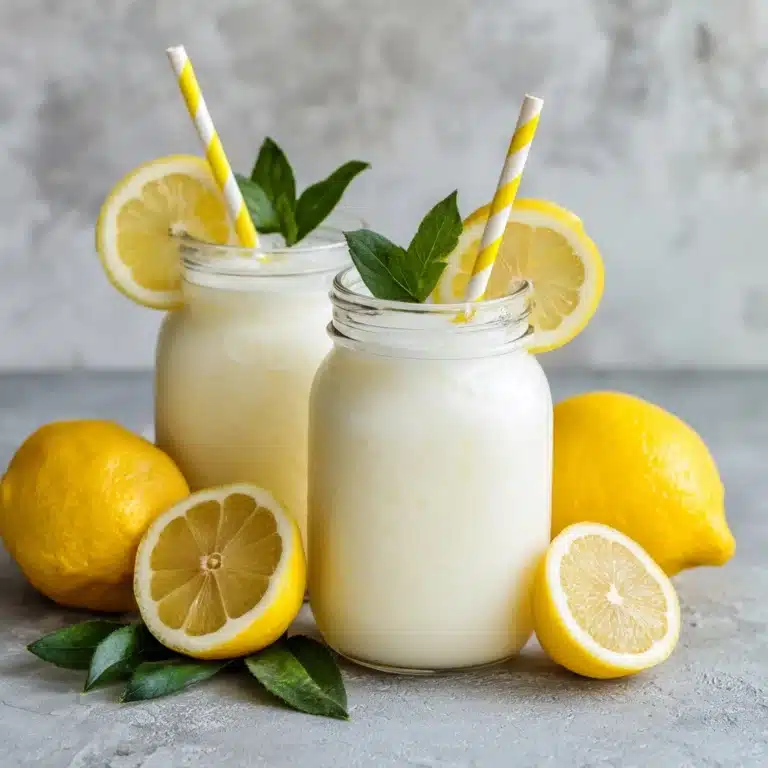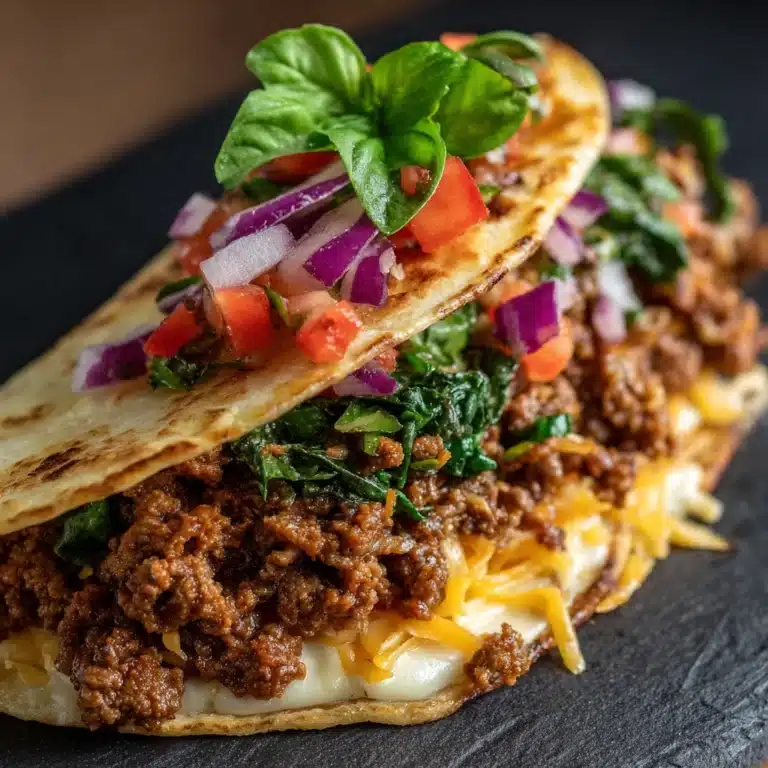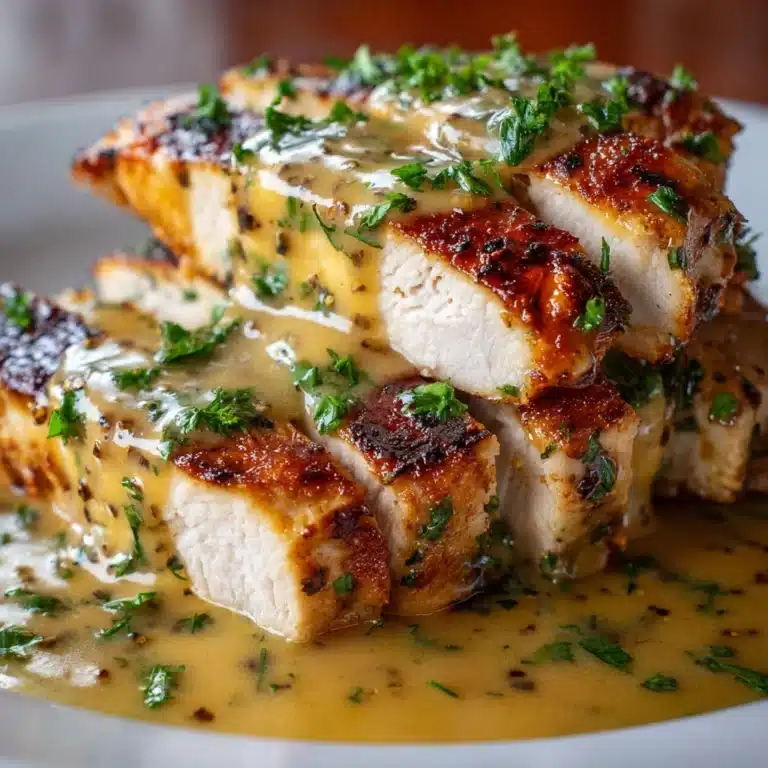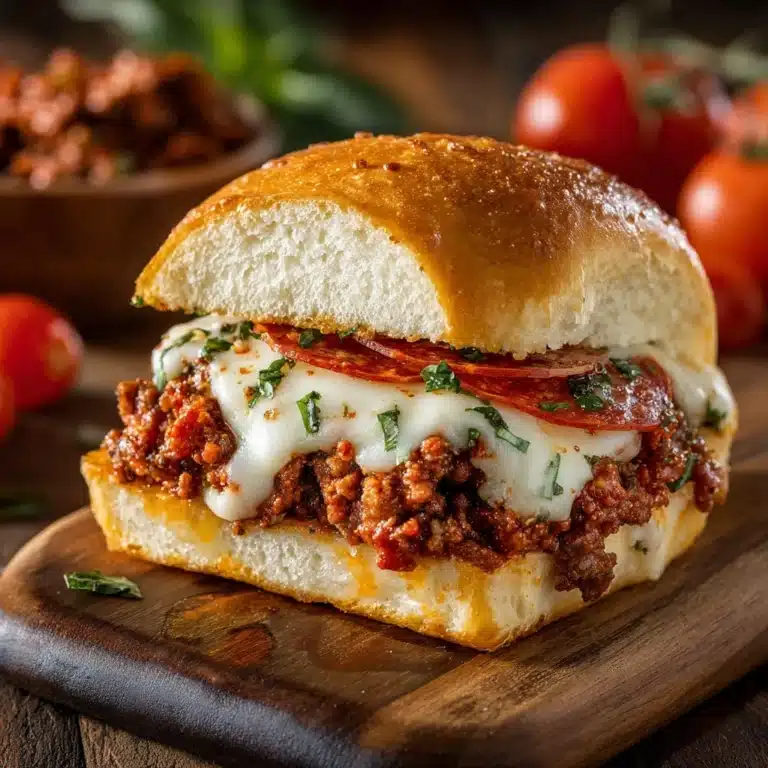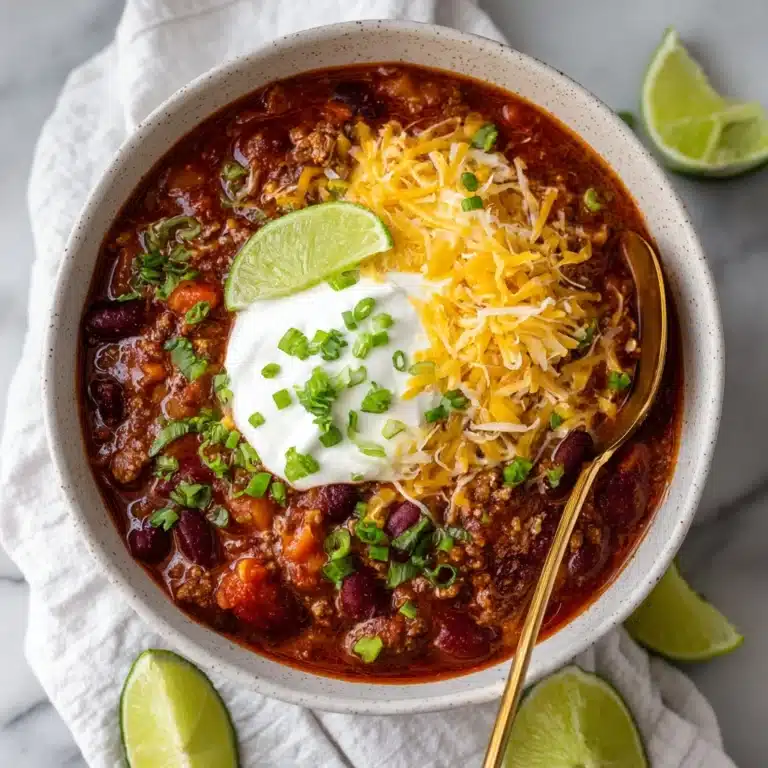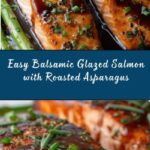Balsamic Glazed Salmon with Asparagus Recipe
If you’re craving a dish that balances rich, savory salmon with fresh, crisp asparagus, look no further than the Balsamic Glazed Salmon with Asparagus Recipe. This meal is a stunning combination of tender, flaky salmon fillets enveloped in a luscious, tangy balsamic glaze, perfectly complemented by the bright, vibrant asparagus. It’s simple yet elegant, offering a delightful mix of flavors and textures that can easily turn weeknight dinners into special occasions. Plus, it’s packed with wholesome ingredients making it as healthy as it is delicious.
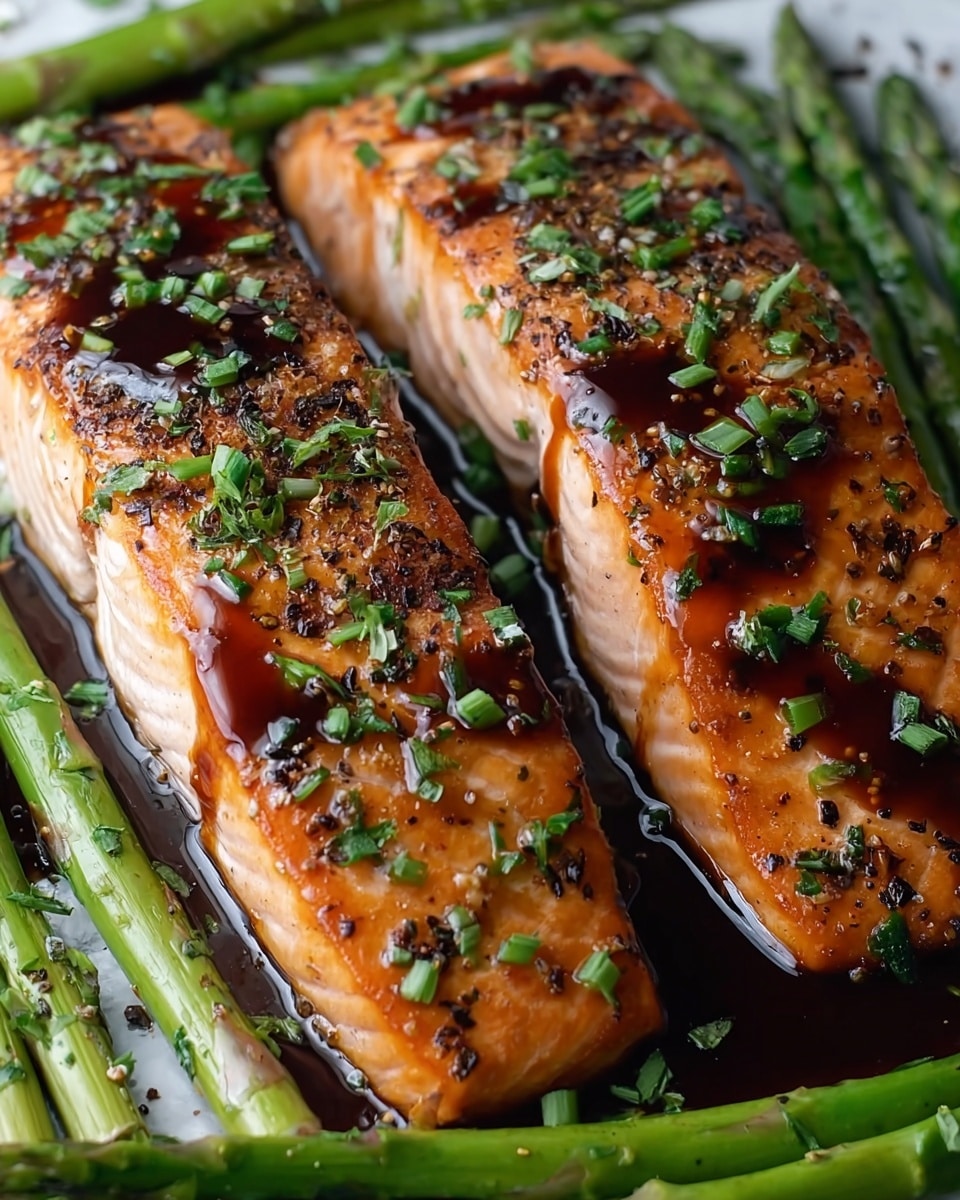
Ingredients You’ll Need
This recipe calls for a handful of essential ingredients that you likely already have in your kitchen. Each item plays a crucial role in building the flavor profile and crafting the perfect texture for this dish.
- Salmon fillets: Choose fresh, skin-on fillets for moist, flaky results and crispy skin if you like.
- Asparagus: Fresh asparagus adds a vibrant green color and fresh crunch to the plate.
- Olive oil: Divided use to both roast the veggies and enrich the balsamic glaze.
- Salt and black pepper: Essential for seasoning to enhance all natural flavors.
- Balsamic vinegar: The star of the glaze with its deep, slightly sweet acidity.
- Honey or maple syrup: Adds a natural sweetness that balances the tang from the vinegar.
- Garlic cloves: Minced garlic brings an aromatic punch to the glaze.
- Dijon mustard: Provides a subtle tang and creamy texture to the sauce.
- Dried thyme or Italian seasoning: Adds herbal notes that complement the salmon and asparagus beautifully.
- Lemon wedges (optional): For a bright finishing touch that really lifts the flavors.
How to Make Balsamic Glazed Salmon with Asparagus Recipe
Step 1: Prepare Your Oven and Baking Sheet
Start by preheating your oven to 400°F. Line a baking sheet with parchment paper or foil to make cleanup a breeze. This sets the stage for cooking both salmon and asparagus simultaneously, making it efficient and easy.
Step 2: Arrange Salmon and Asparagus
Place your salmon fillets skin-side down on one half of the baking sheet. On the other side, neatly arrange the trimmed asparagus. Drizzle 1 tablespoon of olive oil over the asparagus, and sprinkle salt and freshly ground black pepper over both asparagus and salmon. This simple seasoning helps the natural flavors shine.
Step 3: Whip Up the Balsamic Glaze
In a small saucepan over medium heat, combine the balsamic vinegar, honey, minced garlic, Dijon mustard, remaining olive oil, and dried thyme. Bring the mixture to a simmer, stirring frequently for 4-5 minutes. The goal here is to thicken the glaze slightly so it will beautifully coat the salmon and asparagus.
Step 4: Glaze and Roast
Brush half of the balsamic glaze over the salmon fillets to infuse them with flavor. Roast everything for 12 to 15 minutes, or until the salmon flakes easily with a fork and the asparagus is tender but still crisp. If you want a bit more caramelized finish, you can broil it for 1 to 2 minutes at the end.
Step 5: Final Glaze Touch and Serve
Remove the baking sheet from the oven and generously brush the remaining glaze over the salmon. Serve the dish warm, optionally with lemon wedges on the side to add a zesty brightness just before eating.
How to Serve Balsamic Glazed Salmon with Asparagus Recipe
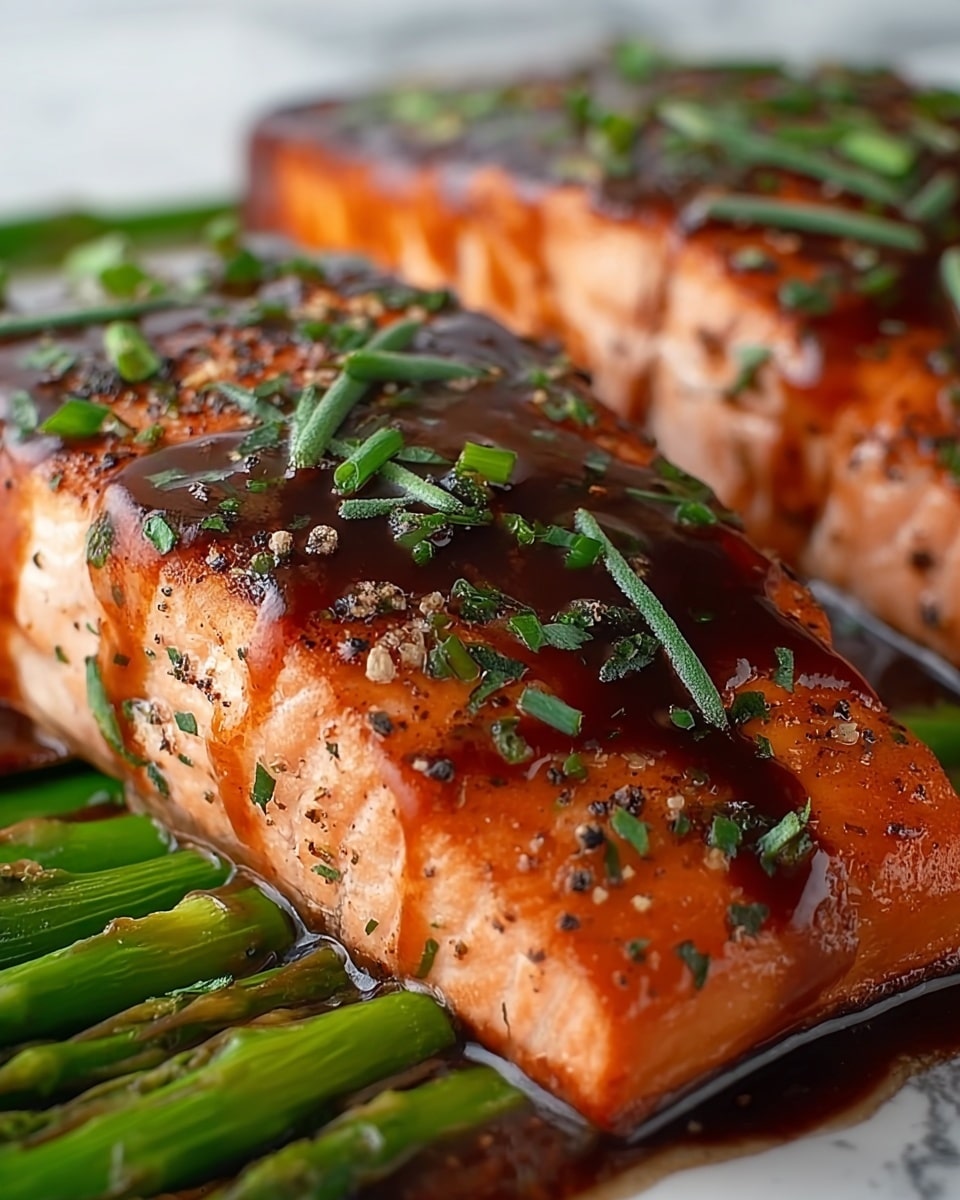
Garnishes
A sprinkle of fresh chopped parsley or a few lemon zest curls add a fresh, visual pop that enhances the dish’s presentation and taste. The citrus zing from lemon wedges also pairs wonderfully with the balsamic glaze.
Side Dishes
This recipe shines with simple, wholesome sides. Consider serving with fluffy quinoa, steamed rice, or roasted baby potatoes. Each side pairs perfectly, soaking up the balsamic glaze and rounding out the meal without overwhelming it.
Creative Ways to Present
For a dinner party, arrange the salmon fillets on a large platter with asparagus elegantly fanned around. Drizzle extra balsamic glaze on the plate, and add edible flowers or microgreens for a gourmet touch. This can transform your home-cooked meal into an elegant feast!
Make Ahead and Storage
Storing Leftovers
Store leftover salmon and asparagus in an airtight container in the refrigerator. They will stay fresh and flavorful for up to 2 days, making for a perfect next-day meal or lunch.
Freezing
While fresh is best, you can freeze cooked salmon by wrapping it tightly in plastic wrap and then foil, or placing in a freezer-safe container. Frozen leftovers remain good for up to one month but note that asparagus texture may soften after freezing.
Reheating
For gentle reheating, warm your leftovers in a low oven (around 275°F) to prevent drying out. Alternatively, microwave on a low setting in short bursts to keep the salmon moist and tender without overcooking.
FAQs
Can I use fresh herbs instead of dried for the glaze?
Absolutely! Fresh thyme or Italian herbs work wonderfully and add a brighter herbal note. Just use about twice the amount of fresh herbs since they are less concentrated than dried.
Is it possible to make this recipe vegan?
You can swap the salmon for a plant-based alternative and use maple syrup instead of honey for the glaze. Roasted asparagus with the balsamic glaze remains delicious and keeps it dairy-free and vegan-friendly.
How do I know when the salmon is perfectly cooked?
The salmon is done when it flakes easily with a fork and is opaque all the way through. Cooking times may vary slightly depending on thickness, so check around the 12-minute mark to ensure tenderness without dryness.
Can I cook this recipe on the grill instead of the oven?
Yes! The salmon and asparagus can both be grilled. Use a grill-safe pan or basket to keep the asparagus together, brush with glaze during cooking, and watch carefully to avoid overcooking.
What can I do if I don’t have balsamic vinegar?
While balsamic vinegar is essential for the signature flavor, you can substitute with a mixture of red wine vinegar and a touch of honey or brown sugar to mimic the sweet and tangy balance.
Final Thoughts
The Balsamic Glazed Salmon with Asparagus Recipe is one of those dishes that feels fancy but couldn’t be simpler to make. It delivers layers of flavor and beautiful presentation with minimal effort. Whether for a cozy dinner or entertaining loved ones, it’s a recipe worth keeping close. Give it a try and watch how it quickly becomes a favorite in your meal rotation!
Print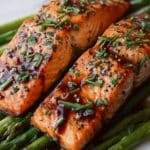
Balsamic Glazed Salmon with Asparagus Recipe
- Total Time: 25 minutes
- Yield: 4 servings 1x
- Diet: Gluten Free
Description
This Balsamic Glazed Salmon with Asparagus is a delicious and healthy sheet pan dinner featuring tender salmon fillets roasted alongside fresh asparagus, all coated in a sweet and tangy balsamic honey glaze. Perfect for a quick weeknight meal, the glaze adds a rich depth of flavor while the roasting method keeps the salmon juicy and the asparagus crisp-tender.
Ingredients
Salmon and Vegetables
- 4 salmon fillets (about 6 ounces each)
- 1 bunch asparagus, trimmed
- 2 tablespoons olive oil, divided
- Salt and black pepper, to taste
Balsamic Glaze
- 1/4 cup balsamic vinegar
- 2 tablespoons honey or maple syrup
- 2 garlic cloves, minced
- 1 teaspoon Dijon mustard
- 1/2 teaspoon dried thyme or Italian seasoning
- Lemon wedges for serving (optional)
Instructions
- Prepare Oven and Baking Sheet: Preheat your oven to 400°F (200°C) and line a baking sheet with parchment paper or foil for easy cleanup. Place the salmon fillets skin-side down on one side of the sheet and arrange the trimmed asparagus on the other side.
- Season Vegetables and Fish: Drizzle 1 tablespoon of olive oil over the asparagus, then season both the salmon fillets and asparagus with salt and black pepper to your taste preference.
- Make the Balsamic Glaze: In a small saucepan over medium heat, combine the balsamic vinegar, honey (or maple syrup), minced garlic, Dijon mustard, the remaining 1 tablespoon of olive oil, and dried thyme or Italian seasoning. Bring the mixture to a simmer and cook, stirring frequently, for 4–5 minutes until the glaze slightly thickens.
- Glaze the Salmon: Brush half of the prepared balsamic glaze over the top of each salmon fillet, ensuring an even coating.
- Roast Salmon and Asparagus: Place the baking sheet in the preheated oven and roast for 12–15 minutes. The salmon should be cooked through and easily flake with a fork, and the asparagus should be tender but still crisp.
- Finish with Remaining Glaze: Remove the baking sheet from the oven and brush the remaining balsamic glaze over the salmon fillets. Serve immediately with optional lemon wedges for added brightness.
Notes
- For extra caramelization and a slightly crispy top, broil the salmon for the last 1–2 minutes of cooking.
- This dish pairs wonderfully with rice, quinoa, or roasted potatoes for a complete meal.
- Replace honey with maple syrup to make the glaze vegan-friendly and suitable for plant-based salmon alternatives.
- Prep Time: 10 minutes
- Cook Time: 15 minutes
- Category: Main Course
- Method: Baking
- Cuisine: American
